The Ultimate Guide to Home Insulation Materials
Brr! Is your home feeling like an igloo in winter and a sauna in summer? You’re not alone! Did you know that proper insulation can slash your energy bills by up to 15%? That’s right, folks – choosing the right types of home insulation materials isn’t just about comfort; it’s a smart investment in your wallet and the planet.
In this guide, we’ll dive into the world of insulation, exploring everything from tried-and-true classics to cutting-edge eco-friendly insulating materials. Get ready to cozy up with knowledge that’ll keep your home snug and your energy bills low!
Understanding R-Value: The Key to Effective Insulation
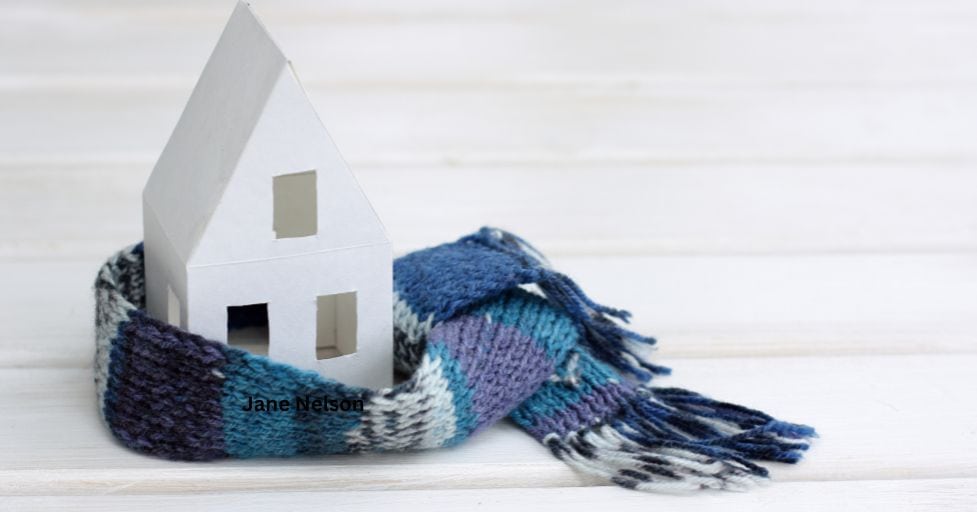
Ever heard of R-value? No, it’s not a secret code or a new gaming console – it’s your ticket to a cozy, energy-efficient home! Let’s dive into this fascinating world of thermal resistance, shall we?
Definition of R-value and its importance in home insulation materials
R-value is the superhero of the insulation world, measuring how well a material resists heat flow. The higher the R-value, the better the insulation. Simple, right? But here’s where it gets interesting: according to the U.S. Department of Energy, increasing your attic insulation from R-11 to R-49 can slash your heating costs by a whopping 30%! Now that’s what I call a return on investment!
Related:
10 Easy Steps to Reduce Home Energy Bills
Save Money Renovating a Rental Property
How R-value affects energy efficiency
But how does R-value work its magic on energy efficiency? Picture this: your home is like a thermos, and R-value is the secret sauce that keeps your coffee hot (or your iced tea cold). The higher the R-value, the less energy needed to maintain a comfortable temperature. It’s like having a force field against the weather!
Factors that influence R-value in different materials
Now, not all insulation materials are created equal. Factors like density, thickness, and even moisture can influence R-value. For example, compressing fiberglass batts can reduce their effectiveness – it’s like squeezing into pants that are too tight; you just can’t perform at your best! And don’t get me started on moisture – it’s the kryptonite of insulation, potentially slashing R-value by up to 50%! Let’s talk about some different home insulation types. You can get most insulation for homes materials at the Home Depot
Fiberglass Insulation: The Time-Tested Classic

Ah, fiberglass insulation – the old faithful of the insulation world. It’s been keeping homes cozy since the 1930s, and for good reason! Did you know that about 85% of American homes are insulated with fiberglass? Talk about popular!
Types of fiberglass insulation (batts, rolls, blown-in)
- Batts and rolls: The dynamic duo of DIY insulation. They’re pre-cut to fit between studs and joists, making installation a breeze.
- Blown-in: The fluffy stuff that’s perfect for those hard-to-reach nooks and crannies. It’s like a cozy blanket for your attic!
Now, fiberglass isn’t without its quirks. On the plus side, it’s affordable, fire-resistant, and doesn’t settle over time. But – and there’s always a but – it can irritate your skin and lungs if not handled properly. Trust me, you want to wear long sleeves, eye protection, and a mask when handling this stuff! I know from personal experience!
Pro tip: When installing fiberglass, dress like you’re going to battle! Long sleeves, gloves, and a mask are your armor against those pesky fibers. And here’s a little secret from the pros: use a pneumatic stapler for batts. It’s faster, easier, and way more fun than hand-stapling. It’s like playing a video game, but you’re leveling up your home’s energy efficiency!
Remember, folks, proper installation is key. Gaps and compressed areas are like leaving the door open for heat to escape. Take your time, cut carefully around obstacles, and don’t be afraid to use multiple layers for higher R-values. Your future self will thank you when those energy bills start shrinking!
Other Suggested Reading:
Home Renovation Mistakes Couples Should Avoid
Pros and Cons of Fiberglass
Alright, let’s get down to brass tacks about fiberglass insulation. It’s like that friend who’s been around forever – you know their quirks, but you still love ’em!
On the plus side, fiberglass is a budget-friendly superstar. It’s like finding a designer coat at a thrift store price! And talk about versatility – this stuff can be used in attics, walls, and floors. But wait, there’s more! Fiberglass is naturally fire-resistant, which is a huge win for home safety. Plus, it doesn’t absorb moisture, so you won’t have to worry about mold throwing a party in your walls.
But let’s not sugarcoat it – fiberglass has its drawbacks too. Remember that itchy sweater your grandma gave you? Fiberglass can feel like that, but worse! It can irritate your skin, eyes, and lungs if you’re not careful during installation. Yes, I know this from personal experience. And here’s a shocker: according to a study by the University of Colorado, fiberglass insulation can lose up to 50% of its R-value in extremely cold temperatures! Brrr!
Home Installation Materials Tips and Best Practices
Now, don’t let those cons scare you off! With the right approach, installing fiberglass can be smoother than a buttered slide. First things first: gear up like you’re heading into battle! Long sleeves, gloves, and a mask are your armor against those pesky fibers. Trust me, you don’t want to end up looking like a human pincushion!
Here’s a pro tip that’ll make you feel like a DIY genius: use a long-handled roller to flatten batts into place. It’s like giving your insulation a spa treatment while keeping your hands safely away from the fibers. Brilliant, right?
When it comes to cutting fiberglass, precision is key. I swear by using a sharp utility knife and a straight edge – it’s like being a surgeon, but for your home! And here’s a little secret: cut the batts about an inch wider than the space. This slight overfitting ensures a snug fit without compression. It’s like getting that perfect Goldilocks fit – not too tight, not too loose, but just right!
Oh, and let’s talk about vapor barriers! If your fiberglass has a kraft paper or foil facing, always install it facing the warm-in-winter side of the wall. It’s like giving your insulation a cozy jacket to keep moisture at bay.
Remember, folks, gaps are the enemy of good insulation. Be meticulous about filling every nook and cranny, especially around electrical boxes and pipes. It’s like playing Tetris, but instead of clearing lines, you’re clearing the way for energy efficiency!
And here’s my final nugget of wisdom: layer up! If you’re aiming for a higher R-value, don’t compress a thick batt into a thin space. Instead, use multiple layers of thinner batts. It’s like layering clothes for a winter hike – each layer adds warmth without sacrificing performance.
By following these tips, you’ll be insulating like a pro in no time. Your home will be cozier, your energy bills lower, and you’ll have bragging rights at your next neighborhood BBQ. Now that’s what I call a win-win-win situation!
Spray Foam Home Insulation Materials: The High-Performance Option
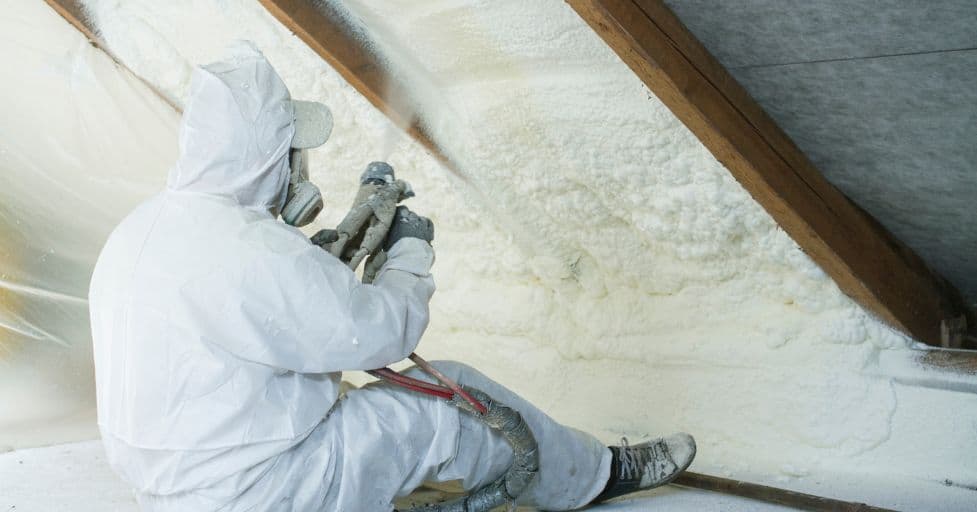
Hold onto your hats, folks, because we’re about to dive into the world of spray foam insulation – the superhero of the insulation universe! This high-tech option is like giving your home a warm, cozy hug that never lets go.
Open-cell vs. closed-cell foam insulation
Open-cell vs. closed-cell foam insulation? It’s like choosing between a soft, fluffy cloud and a dense, impenetrable fortress. Open-cell foam is lighter, more flexible, and great for sound dampening. It’s perfect for those of us who don’t want to hear the neighbor’s dog barking at 3 AM! Closed-cell foam, on the other hand, is denser, stronger, and has a higher R-value per inch. It’s like the Navy SEAL of insulation – tough, efficient, and ready for anything!
Benefits and drawbacks of spray foam
Now, let’s talk benefits. Spray foam creates an air-tight seal that can reduce your energy bills by up to 50%! That’s right, you could potentially cut your energy costs in half. It’s like finding money in your coat pocket, but every single month! Plus, it can strengthen your walls and reduce allergens. Talk about a multi-tasker!
But, (and there’s always a but), spray foam isn’t without its drawbacks. It’s more expensive upfront than traditional insulation, and DIY installation is a no-go unless you fancy yourself as some sort of insulation ninja. Trust me, I’ve seen DIY spray foam jobs gone wrong, and it’s not pretty!
Cost considerations and long-term savings
Cost-wise, spray foam might make you wince initially, but think long-term! According to the U.S. Department of Energy, you could recoup the cost in as little as 3-5 years through energy savings. After that, it’s like your insulation is paying you! Now that’s what I call a smart investment.
Cellulose Insulation: The Eco-Warrior’s Choice
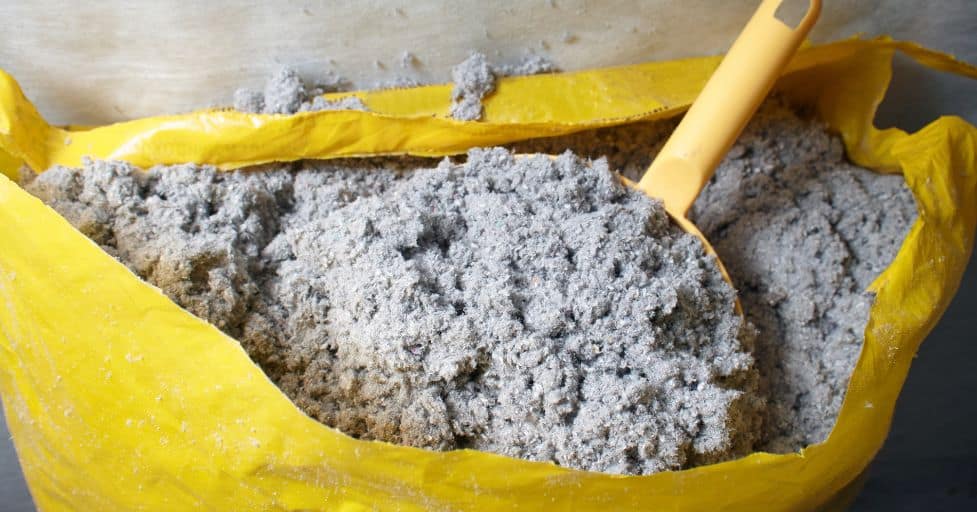
Alright, green warriors, this one’s for you! Cellulose insulation is like the hippie of the insulation world – eco-friendly, recycled, and surprisingly effective.
What is cellulose insulation made of?
So, what’s this stuff made of? Believe it or not, it’s about 85% recycled paper! That’s right, those old newspapers and cardboard boxes get a second life keeping your home cozy. The rest is made up of fire retardants and pest deterrents. It’s like your home’s personal bodyguard, but made from recycled materials!
Environmental benefits of cellulose home insulation materials
The environmental benefits? Oh boy, where do I start! Using cellulose insulation reduces landfill waste, requires less energy to produce than other types of insulation, and has a lower carbon footprint. It’s like giving Mother Nature a high-five while keeping your home warm!
Here’s a mind-blowing fact: according to the Cellulose Insulation Manufacturers Association, using cellulose insulation in a 1500 sq ft home saves about 40 trees worth of paper from landfills. That’s a whole mini-forest!
Installation methods and effectiveness
When it comes to installation, cellulose is pretty versatile. It can be dry-blown into attics like a winter wonderland, or damp-sprayed into walls for a snug fit. And effectiveness? Don’t let its recycled nature fool you – cellulose can achieve R-values comparable to fiberglass, and in some cases, even better!
The best part? Cellulose naturally fits into irregular spaces and around obstacles. It’s like the ninja of insulation, silently and effectively filling every nook and cranny. No more cold spots or drafts!
However, it’s not all sunshine and recycled rainbows. Cellulose can settle over time, potentially reducing its effectiveness. And if it gets wet? Let’s just say it’s not a pretty sight. Proper installation and moisture control are key!
But for those of us who want to reduce our carbon footprint without sacrificing comfort, cellulose is a fantastic option. It’s like wearing a cozy sweater made from recycled materials – warm, eco-friendly, and surprisingly stylish (for insulation, that is)!
Mineral Wool: The Fire-Resistant Insulator
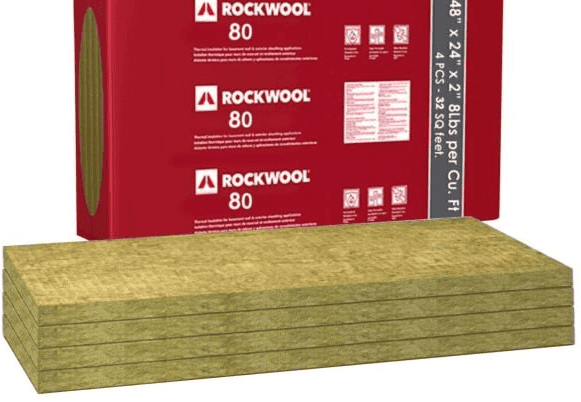
Ladies and gentlemen, let me introduce you to the unsung hero of the insulation world – mineral wool! This stuff is like the Batman of building materials: tough, versatile, and able to withstand extreme conditions. Let’s dive in, shall we?
Composition and manufacturing process
Ever wondered what mineral wool is made of? Well, hold onto your hard hats! It’s actually spun from molten rock or recycled slag from steel mills. That’s right, we’re talking about rocks and industrial waste turned into fluffy insulation. It’s like magic, but with science!
The manufacturing process is a sight to behold. Imagine a cotton candy machine, but instead of sugar, it’s spinning molten rock at 3,000°F! The resulting fibers are collected, compressed, and cut into batts or boards. It’s a process hot enough to make even the sun break a sweat!
Acoustic and fire-resistant properties
Now, here’s where mineral wool really shines. It’s not just great at keeping your home cozy; it’s also a superstar at soundproofing. Living next to a busy street or have a budding drummer in the family? Mineral wool’s got your back!
But wait, there’s more! This stuff is practically fireproof. While other insulation materials might melt or burn, mineral wool stands strong up to 1,800°F! It’s like having a firefighter on duty in your walls 24/7.
Fun fact: Did you know that mineral wool can actually slow the spread of fire by up to 60 minutes? That’s enough time to binge-watch an episode of your favorite show while waiting for the fire department! We don’t recommend that however.
Comparing mineral wool to fiberglass
Now, I know what you’re thinking. “But what about good old fiberglass?” Well, let’s compare apples to apples (or should I say, rocks to glass?).
Mineral wool typically has a higher R-value per inch than fiberglass. It’s like getting more bang for your insulation buck! Plus, it’s denser, which means better sound insulation. So you can crank up your home theater without disturbing the neighbors!
On the flip side, mineral wool is usually pricier than fiberglass. But remember, you’re not just paying for insulation; you’re investing in fire resistance and superior sound dampening. It’s like upgrading from economy to first class – sure, it costs more, but oh, the perks!
Polyisocyanurate (Polyiso): The Thin Yet Mighty Insulator

Alright, folks, brace yourselves for a tongue twister: Polyisocyanurate! Let’s just call it Polyiso, shall we? This high-performance insulation is like the overachieving kid in class – thin, efficient, and always exceeding expectations.
R-value per inch compared to other materials
Hold onto your thermostats because Polyiso is about to blow your mind! With an R-value of 6.5 to 6.8 per inch, it’s the reigning champion of thermal resistance. That’s nearly twice the R-value of fiberglass! It’s like having a sumo wrestler guarding your home against heat loss.
To put it in perspective, you’d need about 3 inches of fiberglass to match the insulating power of just 1.5 inches of Polyiso. Talk about a space-saver!
Applications in residential and commercial buildings
Polyiso is the Swiss Army knife of insulation. It’s perfect for tight spaces where every inch counts. Think flat roofs, cathedral ceilings, or that awkward space under your bay window. In commercial buildings, it’s a go-to for large flat roofs and exterior walls.
But here’s the kicker – Polyiso isn’t just for new construction. It’s a superstar in retrofits too! You can slap it on existing walls to boost their R-value without major renovations. It’s like giving your old home a thermal facelift!
Moisture resistance and durability
Now, let’s talk longevity. Polyiso is like that energizer bunny – it just keeps going and going. It’s resistant to moisture, mold, and mildew. So even if your roof springs a leak, your insulation won’t turn into a soggy mess.
And durability? This stuff is tough as nails. It doesn’t sag, settle, or degrade over time. It’s like the insulation equivalent of those indestructible Nokia phones from the 90s!
Here’s a mind-blowing fact: A study by the Polyisocyanurate Insulation Manufacturers Association found that Polyiso retains 97% of its R-value after 15 years! That’s like buying a car that still runs like new after 200,000 miles.
So there you have it, folks. Whether you choose the fire-fighting, sound-dampening mineral wool or the thin-but-mighty Polyiso, you’re making a solid investment in your home’s comfort and energy efficiency. Now, who’s ready to insulate?
Natural Home Insulation Materials: Going Green with Insulation
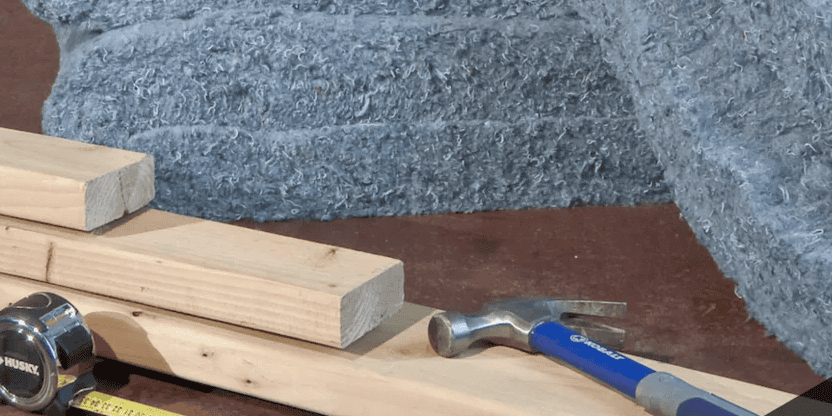
Eco-warriors, unite! It’s time to talk about insulation that Mother Nature herself would approve of. We’re diving into the world of natural insulation materials, where your walls can be as green as your lifestyle!
Hemp, cotton, and sheep’s wool insulation
Who knew your favorite t-shirt material could keep your house warm? Cotton insulation is like wrapping your home in a cozy blanket. Hemp? It’s not just for hippies anymore! This fast-growing plant makes fantastic insulation. And sheep’s wool? Well, if it can keep sheep toasty in the dead of winter, imagine what it can do for your home!
Fun fact: Did you know that sheep’s wool can absorb and release moisture without losing its insulating properties? It’s like having a built-in dehumidifier in your walls!
Pros and cons of natural materials
Let’s get real for a minute. These natural materials are like the superhero squad of the insulation world. They’re non-toxic, renewable, and often made from recycled materials. Plus, they’re safe to handle – no itchy fiberglass fingers here!
But, (and there’s always a but), they’re not without their kryptonite. Natural materials can be pricier than synthetic options. And while sheep’s wool might repel pests naturally, other materials might need additional treatment to keep the critters at bay.
Sustainability and environmental impact
Here’s where things get exciting! According to the U.S. Green Building Council, buildings account for 39% of CO2 emissions in the United States. But by choosing natural insulation, you’re giving the planet a high-five! These materials have a significantly lower carbon footprint than their synthetic counterparts.
Hemp insulation, for instance, can actually sequester carbon as it grows. It’s like having a tiny forest working to offset your carbon footprint before it even becomes insulation!
Reflective Insulation and Radiant Barriers
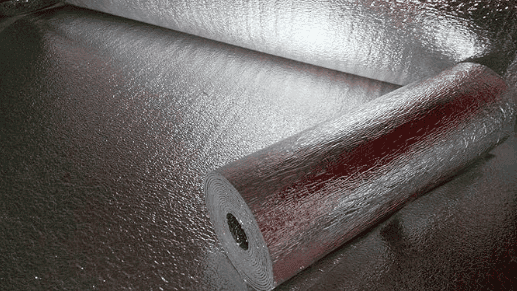
Alright, space cadets, it’s time to talk about insulation that looks like it came straight out of NASA! Reflective insulation and radiant barriers are the cool kids on the insulation block.
How reflective home insulation materials work
Picture this: it’s a scorching summer day, and you’re holding up one of those shiny car sunshades. That’s essentially how reflective insulation works, but for your whole house! It reflects radiant heat away from your living space, keeping you cool as a cucumber.
The secret sauce? A layer of highly reflective material, usually aluminum foil, facing an air space. It’s like giving your house a suit of shiny armor against the sun’s rays!
Best applications for radiant barriers
Now, where does this space-age insulation work best? Attics, my friends! In hot climates, a radiant barrier in the attic can reduce cooling costs by 5-10%. That’s like getting a free popsicle every day of summer!
But don’t stop at attics. Radiant barriers are great for walls, especially in new construction. And for you DIY enthusiasts, you can even use it behind radiators to reflect heat back into the room. It’s like catching heat and throwing it back where you want it!
Combining reflective home insulation materials with other materials
Here’s where the magic happens. Reflective insulation is like the perfect dance partner – it works great solo, but it really shines when paired up! Combine it with fiberglass or foam insulation, and you’ve got a dynamic duo of thermal resistance.
Imagine a lasagna of insulation: a layer of fiberglass for thermal resistance, an air gap, and then a layer of reflective insulation. That’s not just insulation; that’s a thermal force field!
Pro tip: When combining insulation types, always check local building codes. You don’t want your creative insulation combo to land you in hot water with the inspectors!
So there you have it, folks! Whether you’re going au naturel with sheep’s wool or space-age with radiant barriers, you’re taking steps towards a cozier, more energy-efficient home. And remember, in the world of insulation, it’s not just about keeping warm – it’s about keeping smart!
Innovative Insulation Technologies: What’s New in 2024?

Buckle up, insulation enthusiasts! We’re about to take a wild ride into the future of home comfort. It’s 2024, and the insulation game has changed big time. We’re not just talking about keeping warm anymore; we’re entering a brave new world of smart, responsive, and downright sci-fi-worthy insulation tech!
Aerogel insulation: the future of high-performance materials
Remember that scene in “Back to the Future” where Doc Brown rips open his shirt to reveal a bulletproof vest? Well, aerogel insulation is kind of like that – mind-blowingly effective and straight out of a movie! This stuff is like the ninja of insulation materials. It’s 95% air, yet it can insulate better than almost anything else on the market. Talk about punching above its weight class!
Here’s a jaw-dropper for you: aerogel can provide the same insulation as fiberglass with just one-third the thickness. It’s like the insulation equivalent of those expandable travel bags – tiny package, big results!
Phase-change materials for temperature regulation
Now, let’s talk about phase-change materials (PCMs). These bad boys are like the mood rings of the insulation world – they change their physical state to regulate temperature. Imagine tiny wax beads in your walls that melt when it’s hot, absorbing excess heat, and then solidify when it’s cool, releasing that stored heat. It’s like having a thermal battery built into your home!
A study by the U.S. Department of Energy found that PCMs can reduce peak cooling loads by up to 35%. That’s not just cool; that’s ice-cold efficiency!
Smart insulation systems and home automation integration
Welcome to the era of insulation with a brain! Smart insulation systems are the new kids on the block, and they’re here to shake things up. These systems use sensors and AI to adjust your home’s insulation in real-time. It’s like having a tiny army of thermal engineers working 24/7 to keep your home comfy.
Imagine this: your smart insulation system notices you’re having a party. It automatically adjusts to account for the extra body heat, keeping everyone comfortable without you lifting a finger. Now that’s what I call a smart home!
Choosing the Right Home Insulation materials for Your Home
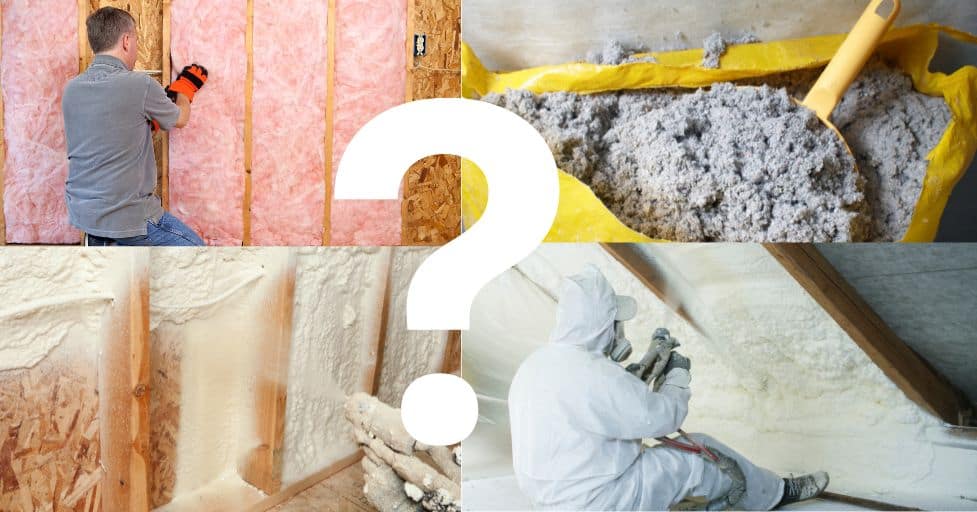
Alright, folks, it’s decision time! With all these amazing options, how do you choose the right insulation for your humble abode? Don’t worry; I’ve got your back. Let’s break it down!
Factors to consider (climate, home structure, budget)
Choosing insulation is like picking out a new outfit – one size definitely does not fit all! You’ve got to consider your local climate (Is it hotter than a jalapeño or colder than a penguin’s toes?), your home’s structure (Are we talking a cozy cottage or a sprawling mansion?), and of course, your budget (Champagne taste on a beer budget, anyone?).
Pro tip: In areas with extreme temperatures, consider layering different types of insulation. It’s like dressing in layers for a hike – each layer serves a purpose!
Professional assessment vs. DIY home insulation materials installation
Now, I know some of you DIY warriors are itching to grab that staple gun and get to work. But hold your horses! While some insulation jobs are perfect for weekend warriors, others are best left to the pros.
Did you know that improper installation can reduce insulation effectiveness by up to 30%? That’s like paying for a first-class ticket and ending up in coach!
If you’re dealing with spray foam or tackling a whole-house project, it might be worth calling in the cavalry. But for simpler jobs like adding an extra layer of batts in the attic? Roll up those sleeves and have at it!
We insulated one of our homes with fiberglass batts. It was easy peasy, but itchy. But because it had a good-sized attic. We blew in cellulose insulation.
Combining different home insulation materials for optimal performance
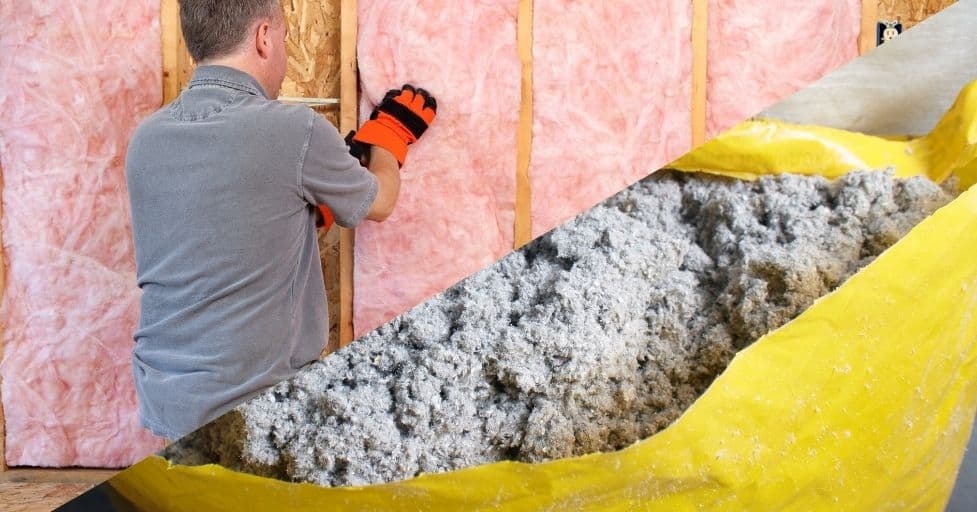
Here’s where we get to play insulation mixologist! Combining different types of insulation is like creating the perfect cocktail – it’s all about finding the right blend.
For example, you might use spray foam to seal air leaks, then add fiberglass batts for bulk insulation, and top it off with a radiant barrier in the attic. It’s like a thermal protection parfait!
Remember, the goal is to create a continuous thermal envelope around your living space. No gaps, no weak spots, just a cozy cocoon of energy efficiency!
So there you have it, folks! Whether you’re geeking out over aerogels or mixing and matching insulation types like a pro, you’re well on your way to creating a more comfortable, energy-efficient home. Now go forth and insulate like it’s 2024!
Conclusion: Whew! We’ve certainly covered a lot of ground in our insulation adventure, haven’t we? From the fluffy world of fiberglass to the high-tech realm of aerogels, there’s no shortage of options to keep your home cozy. Remember, folks – the best insulation is the one that fits your unique needs and budget.
So, whether you’re team eco-warrior with cellulose or team high-performance with spray foam, you’re making a smart choice for your home and the environment. Ready to take the plunge? Get an energy audit, consult with professionals, and start insulating your way to comfort and savings. Your future self (and your wallet) will thank you!
FAQs for Best Home Insulation Materials and Homemade Insulation Material
Q: What’s the best insulation for my attic?
A: It depends on your climate and budget. Hopefully if it’s an existing home, there will be insulations. But with unfinished attic floors, Fiberglass batts are affordable and work well in most homes. For better performance, consider blown-in cellulose or spray foam. That’s what we did. Always ensure proper ventilation too!
Q: How do I know if my home needs more insulation?
A: Look for high energy bills, cold walls or floors, drafts, and uneven temperatures between rooms. If your home feels chilly in winter or too hot in summer, you probably need more insulation.
Q: Can I install insulation myself?
A: You can install some types like fiberglass batts in easy-to-reach areas. But for spray foam or whole-house projects, hire a pro. Improper installation can reduce effectiveness and even cause damage.
Q: What’s the most eco-friendly insulation option?
A: Recycled cellulose is very green. It’s made from recycled paper and is effective. Other eco-options include sheep’s wool, cotton, and hemp. These are renewable and have low environmental impact.
Q: How much can I save on energy bills with good insulation?
A: It varies, but many homeowners save 15-20% on heating and cooling costs with proper insulation. In cold climates, savings can be even higher. The upfront cost usually pays off within a few years.






